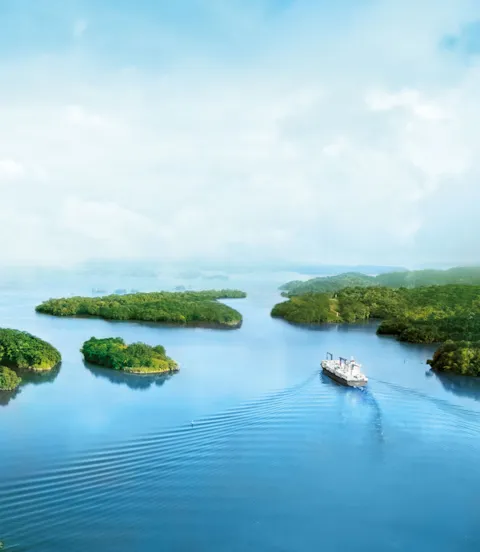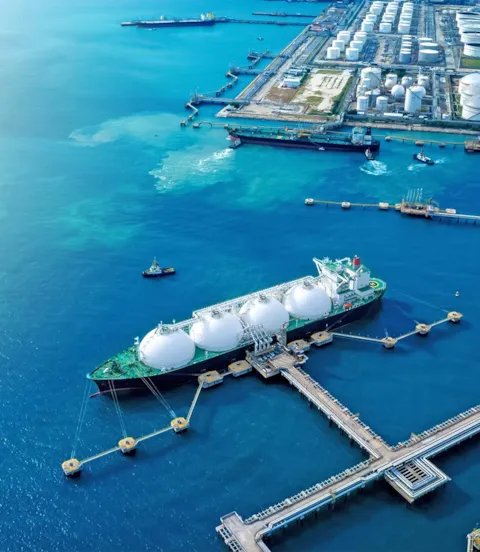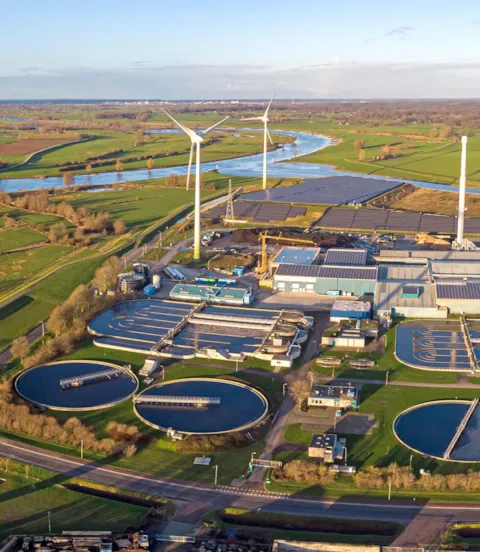Exploring all options to keep decarbonization on course
With IMO targets becoming more ambitious, DNV’s latest Maritime Forecast to 2050 explores how shipping can reach its decarbonization goals. With an expected shortfall of carbon-neutral fuels, the maritime industry needs to explore all decarbonization options to achieve a 20% reduction in greenhouse gas emissions by 2030.
“This is a decisive decade for shipping decarbonization with the transition accelerating through new policies in the EU and the IMO’s ambitious decarbonization strategy aiming for net-zero by 2050. Maritime needs insight into and evidence of designs, fuels and fuel technologies that will be effective, available and affordable,” Eirik Ovrum, Maritime Principal Consultant at DNV and lead author of Maritime Forecast to 2050 says. “We look in-depth at technologies that can alleviate the coming demand for carbon-neutral fuels and offer a vision of how to stay on course for compliance with emission-reduction goals.”

Shipping’s energy transition already underway
The maritime energy transition is picking up. In mid-2022, a third of tonnage on order could use LNG, LPG or methanol in dual-fuel engines. In mid-2023, that had risen to half. By tonnage, 6.5% of ships operating today can run on alternative fuels, compared with 5.5% last year.
However, uptake of methanol and LPG, and the first hydrogen-fuelled newbuilds, are now appearing in the data. Ammonia-fuelled ships are being demonstrated; none have yet been ordered but that is expected to happen soon.
“The trend is encouraging, but still, far too few of these ships (6.5%) actually run on low carbon or carbon-neutral fuels to have a real impact. Shipping is also facing headwinds if we can’t compete with sectors like aviation for the same fuels for decarbonization or with chemical industries using, for example, ammonia, as a feedstock,” warns Ovrum.

Will carbon-neutral fuels be available and affordable?
With global, regional and national GHG-reduction targets becoming more ambitious and the maritime transition speeding up, the industry wonders if enough carbon-neutral fuels will be available when and where needed at economic prices.
To estimate supply trends, DNV now compiles and maintains a comprehensive global carbon-neutral- fuel-production project database.
Using this, Maritime Forecast to 2050 estimates that the probable global cross-sector production volume of carbon-neutral fuels in 2030 will be 44–62 million tonnes of oil equivalent (Mtoe). It predicts that shipping would need a huge 30–40% of this to meet expected demand of 17 Mtoe per year by then under the IMO’s current GHG strategy.

Price and supply uncertainties for carbon-neutral fuels
Based on its supply and demand modelling, Maritime Forecast to 2050 concludes that alternative fuel production must scale quicker if shipping’s emission-reduction goals are to be met. It adds that while fuel producers must accelerate plans, they need offtake commitments from fuel buyers. The paper warns that supply uncertainties will lead to fluctuating prices during the ramp-up.
“Fuel flexibility will thus be key for shipowners during the transition,” Ovrum concludes. “And with carbon-neutral fuels seemingly destined to be costly and hard-to-source, the industry should explore all decarbonization possibilities.”

Energy-efficiency technologies for shipping
Non-fuel decarbonization possibilities include low-cost options such as speed reduction and route optimization, and greater efficiency through digitalization.
“These are important for shipowners to reach short-term GHG reduction goals, particularly as the IMO has also strengthened the 2030 and 2040 goals and low-carbon fuel production remains very low. Reducing energy consumption is critical to reduce emissions and soften the impact of increased energy costs,” Ovrum explains.
Maritime Forecast to 2050 examines in detail the current deployments and results with wind-assisted propulsion and air lubrication systems, both for reducing fuel consumption. It also reports on the current state and potential future for using liquefied hydrogen ship fuel, modelling the technology’s sensitivity to hydrogen prices, vessel CAPEX and to selected carbon-neutral fuel prices.
Discussion of the future for Solid Oxide Fuel Cell (SOFC) – generating electricity from ammonia, LNG, methanol or hydrogen – concludes that ongoing pilot projects could demonstrate the technology’s operational efficiency within five years.

On-board CCS and nuclear propulsion as alternative decarbonization solutions
The importance of looking at all technically available options is now indisputable. For example, on-board carbon capture and storage (CCS) and nuclear propulsion could in theory reduce reliance on renewable electricity, sustainable biomass and blue ammonia/hydrogen for decarbonization.
Maritime Forecast to 2050 evaluates whether either technology could compete with marine fuel oil, LNG (including carbon-neutral versions), and carbon-neutral ammonia and methanol.
It concludes that under some conditions, both on-board CCS and nuclear are feasible operationally and could be cost-competitive with other decarbonization fuel strategies. A later Maritime Impact article will explore the finding in detail, including how these technologies can be cost-competitive.

Impact of well-to-wake requirements
In this vital decade for securing a lower-carbon future for shipping, requirements on life cycle or well-to-wake GHG emissions are coming. They include FuelEU Maritime from 2025 in the EU and the IMO’s proposed well-to-wake GHG fuel intensity requirement, which would apply globally.
The stated aim is to avoid shipping shifting emissions to other sectors as it decarbonizes. Maritime Forecast to 2050 calculates that shipping emitted around one billion tonnes of carbon dioxide equivalent well-to-wake in 2020. A sixth (16%) of it was during fuel extraction, production and distribution.

Green shipping corridors demonstrate collaboration in action
Collaboration to identify, define and lower barriers on a manageable scale is another way to accelerate uptake of carbon-neutral fuels.
For example, Maritime Forecast to 2050 outlines an approach for value-chain stakeholders including governments to create green shipping corridors, based on DNV’s decade-long expertise in Norway’s existing corridors.
“This and other insights in our latest Maritime Forecast to 2050 underline, with relevant research, why the industry needs a holistic approach to decarbonization. Collaboration and communication between industry stakeholders, public policymakers and others are essential in such a complex and evolving decision-making environment,” Ovrum concludes. “And while it pays to consider all decarbonization options, the industry needs further regulatory clarity and commercialization of new technologies by the end of this decade to reach the goals being set for its decarbonization.”

- Designpics - stock.adobe.com
- DNV
- Shutterstock / GreenOak
- Shell Plc
- Shutterstock / Maarten Zeehandelaar